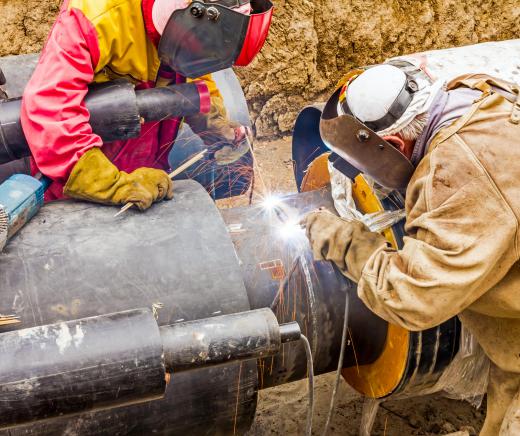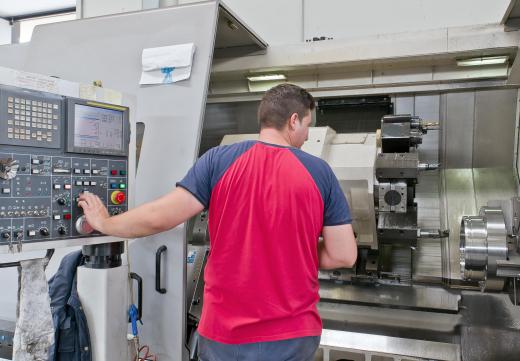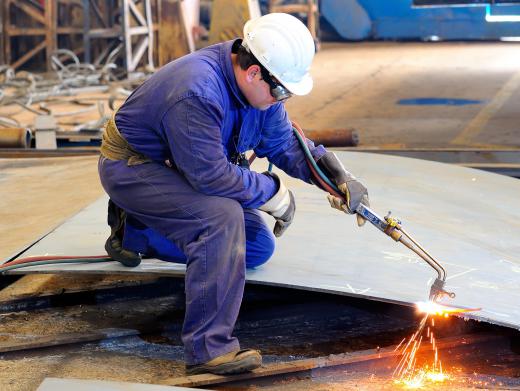Plasma, also referred to as ionized gas, is the fourth state of matter, in addition to the more commonly known states of solid, liquid and gas. It is a collection of charged molecules which form gas-like clouds or ion beams. Plasma is electrically charged and responds strongly to electromagnetic fields. A plasma torch, also known as a plasma arc or plasma gun, is an electrical device which converts a gas into plasma for melting through metal.
A plasma torch works by projecting an electric arc produced by polarized electrodes through gas that is being forced through a small opening, the nozzle. As the gas becomes electrically charged its temperature elevates until the gas enters the plasma state. The electric charge is transferred to the metal causing it to melt, and the high velocity gas cuts through the molten material. Nitrogen, oxygen and argon can all be used, but the most popular gas is simply forced air. A plasma torch can cut cheaper, faster and more accurately than the traditional oxy-acetylene torch.

A plasma torch can be effective for both cutting and welding. As with cutters, plasma welding torches have high speeds and high quality performance for creating pore-free welding seams. These tools come with a standard electrical cord, a chamber for the air or gas, and a nozzle with an electrode placed behind it. A gas source, such as an air compressor or bottled air or gas, is attached to the torch. For most metals, compressed air is sufficient, though nitrogen or argon may be used for cutting stainless steel or other exotic metals.

The automotive and construction industries use a computer numerical control (CNC) plasma torch to make custom auto shapes required for chassis or frames, and to cut large steel beams. The versatility and accuracy of this device makes it a great tool for the creating metal art, jewelry and ornamental iron work. Many CNC torches are large, expensive equipment designed to operate on the assembly line of a large shop, such as an automobile factory; however, smaller and more affordable models are now available for small shops and individual craftsmen.

For applications which do not require CNC equipment, hand-operated units are available at a relatively inexpensive price. The air pressure capacity required varies depending upon the size of the plasma torch, so the purchaser should select the torch prior to determining what size air compressor to buy. Replacement parts, such as air filters, nozzles and electrodes are available from a number of sources.
A plasma torch, like any other power tool, can cause serious injury if appropriate safety measures are not followed. The light from the plasma torch can seriously damage the naked eye, so safety glasses with side shields should be worn at all times. Gloves and fire-resistant clothing can protect against sparks. These cutters operate at extremely high temperatures which can burn through gloves, so hands should be kept away from the nozzle, arc and metal workpiece. To prevent fires or explosions, the torch should only be used in well-ventilated areas away from any other flammable material.
